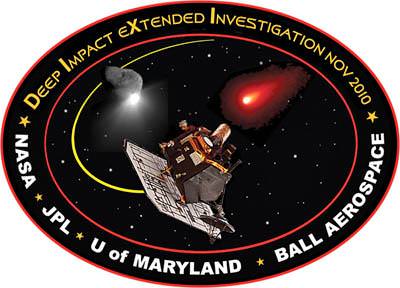[/caption]
The re-purposed Deep Impact spacecraft will make one final flyby of Earth on Sunday June 27, 2010, getting a gravity assist to help propel the spacecraft towards a meetup with comet Hartley 2 this fall. The spacecraft bus that brought the Deep Impact “impactor” to comet Tempel 1 in July of 2005 has been put back to work double time where two new missions share the same spacecraft. This is the fifth time this spacecraft has flown by Earth, and at the time of closest approach on Sunday, it will be about 30,400 kilometers (18,900 miles) above the South Atlantic.
“The speed and orbital track of the spacecraft can be changed by changing aspects of its flyby of Earth, such as how close it comes to the planet,” said University of Maryland astronomer Michael A’Hearn, principal investigator for both the new EPOXI mission and its predecessor mission, Deep Impact.
The combined operation EPOXI is a combo-acronym of the two separate missions. The Deep Impact Extended Investigation (DIXI) of comets will observe comet 103P/Hartley 2 during a close flyby in November 2010. The other half of the dynamic duo, called the Extrasolar Planet Observation and Characterization (EPOCh) which is observing stars already known to have transiting giant planets.
“There is always some gravity boost at a flyby and in some cases, like this one, it is the main reason for a flyby. The last Earth flyby was used primarily to change the tilt of the spacecraft’s orbit to match that of comet Hartley 2, and we are using Sunday’s flyby to also change the shape of the orbit to get us to the comet,” said A’Hearn.
The Deep Impact mission smashed a companion probe into comet Tempel 1 on July 4, 2005 to reveal the inner material of a comet.
“Earth is a great place to pick up orbital velocity,” said Tim Larson, the EPOXI project manager from NASA’s Jet Propulsion Laboratory in Pasadena, Calif. “This flyby will give our spacecraft a 1.5-kilometer-per-second [3,470 mph] boost, setting us up to get up close and personal with comet Hartley 2.”
During a previous flyby of Earth, the mission team has used the spacecraft’s instruments to find evidence of water on the Moon and to study light reflected from Earth as a template that scientists eventually may be able be use to identify Earth-like planets around other stars.
Source: University of Maryland


I saw the ISS two nights in a row! but missed tonight.. too many houseguests?… dzzz… MAANO man is that thing ever bright! I like! ~@; )
Oops… I posted in the wrong place. My bad… I must have thought I was elsewhere?